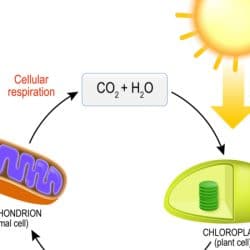Clemmensen reduction is an organic process of transforming carbonyl compounds into alkanes with the help of Zinc amalgam and presence of high acidic medium.
What is Clemmensen reduction?
Clemmensen reduction is the process of deoxygenation of aldehydes and ketones to produce hydrocarbons. It is the reaction where the carbonyl compounds (ketone) transform into corresponding alkanes with the help of zinc amalgam (Zn/Hg alloy) in the presence of an acidic medium (concentrated HCl). To transform ketones or aldehydes into alkanes we need some catalyst, and in this case, zinc amalgam does the job for us. Zinc amalgam provides the required amount of electrons in order to complete the reaction.
Danish chemist Erik Christian Clemmensen was the first to discover this reaction in 1913.
Mechanisms of Clemmensen Reduction
The reaction performs at the surface of the Zinc catalyst, because the substrate we use for this reaction must be stable to strong acid. Alcohols are not postulated as intermediates, because subjection of the corresponding alcohols to these same reaction conditions does not lead to alkanes.
The reaction occurs in three following steps :
- Step 1
The acidic medium (HCl) activates the carbonyl carbon. The carbonyl carbon is less stable towards nucleophilic attack. So in order to increase the electrophilicity, the H+ of the acidic medium(HCl) will attack the oxygen atom and will make a more electrophilic stable structure (positively charged carbon atom).
- Step 2
Now in step 2 the Zinc (Zn) provides two electrons to the positively charged carbon atom and convert it into negatively charged carbon atom. Now the acidic medium produces H+ ions to the oxygen atom & the negatively charged carbon atom and will create an unstable structure.
- Step 3
As soon as the water (H2O) molecule departs as a leaving group, it creates a positively charged carbon atom. Now again, the positively charged carbon atom gets two-electrons from Zinc (Zn) and becomes a negatively charged carbon atom.
Now in the last stage protonation occurs in the presence of acid (H+) and the final product alkane comes.
The reason behind using Zinc amalgam as a catalyst:
In this reduction, the reason zinc amalgam works while powder of zinc metal does not, is because Mercury activates the metallic zinc by dissolving it into individual atoms of zinc. The Zinc atoms are distributed evenly in the alloy.
So, zinc amalgam performs in this reaction as it is a solution of zinc. And that is why we use zinc amalgam instead of using zinc metal.
Read Also: High-Context Culture: Definition & Examples
When zinc reacts with hydrochloric acid, it releases hydrogen gas (H₂). When this reaction takes place with zinc amalgam, the reaction of zinc and HCl produces two individual hydrogen molecules which remain in a reactive state. Further, it reacts with the carbonyl compound (ketone or aldehyde) to initiate the reduction reaction.
So, the mercury in zinc amalgam usually serves to hold the active hydrogen as it is formed and allow it to attack the carbonyl compound rather than be released as H₂ gas
What are the Differences Between Clemmensen and Wolff Kishner Reduction?
Clemmensen and Wolf kishner both are important in the organic synthesis of different chemical compounds. The major and basic difference between these two reactions is
- Clemmensen reduction converts the ketones to Aldehydes.
- Whereas, Wolf kishner reduction converts the carbonyl groups into methylene groups.
Both of these reductions do these conversions via reducing the functional groups. Though both of them require specific reaction conditions and catalyst to reach the final product.
- In Clemmensen reduction, we use Zinc amalgam as the catalyst.
- Wolf kishner reduction needs no catalyst. We use Hydrazine
- Clemmensen reduction is unsuitable for an acid-sensitive substrate.
- Wolf kishner reduction is unsuitable for a base sensitive substrate.
What is more preferable? Clemmensen or Wolf kishner?
Both of the reactions are important organic reactions. They have their specific reaction conditions to perfectly accomplish the reduction. Still, in a rare condition or case, we might need to consider one as the most preferable.
Wolf kishner needs strong basic conditions and high heat. Clemmensen is performed in strongly acidic conditions. Now, if we have a protecting group in the substrate that can be removed with acids, we need to consider Wolf kishner then.
Some frequently asked questions about Clemmensen reduction
Q. Give an example of Clemmensen Reduction.
Ans.
Q. Does Clemmensen reduction reduce alcohol?
Ans. No, there is no formation of alcohol during the reaction, that’s why Clemmensen reduction is not useful to reduce alcohol to alkanes.
Q. Which catalyst do we use in Clemmensen reduction?
Ans. Zinc Amalgam is the catalyst in this reaction.
Q. What are the limitations of Clemmensen reduction?
Ans. Clemmensen reduction is only suitable for substances that are not sensitive to acid. Groups like -COOH also can’t be reduced by this method.
Q. Does Clemmensen reduction reduce double bonds?
Ans. The Clemmensen Reduction involves the reaction of zn and heated HCl to something reducible that can chlorinate a double bond, if present on the reactant. The main principle of the Clemmensen Reduction is to reduce a −O∣∣C− to a −CH2− or −O∣∣C−H to a −CH3.
Q. What is the role of Hg in Clemmensen reduction?
Ans. Hg helps the deoxygenation of aldehydes or ketones to form the corresponding hydrocarbon.








